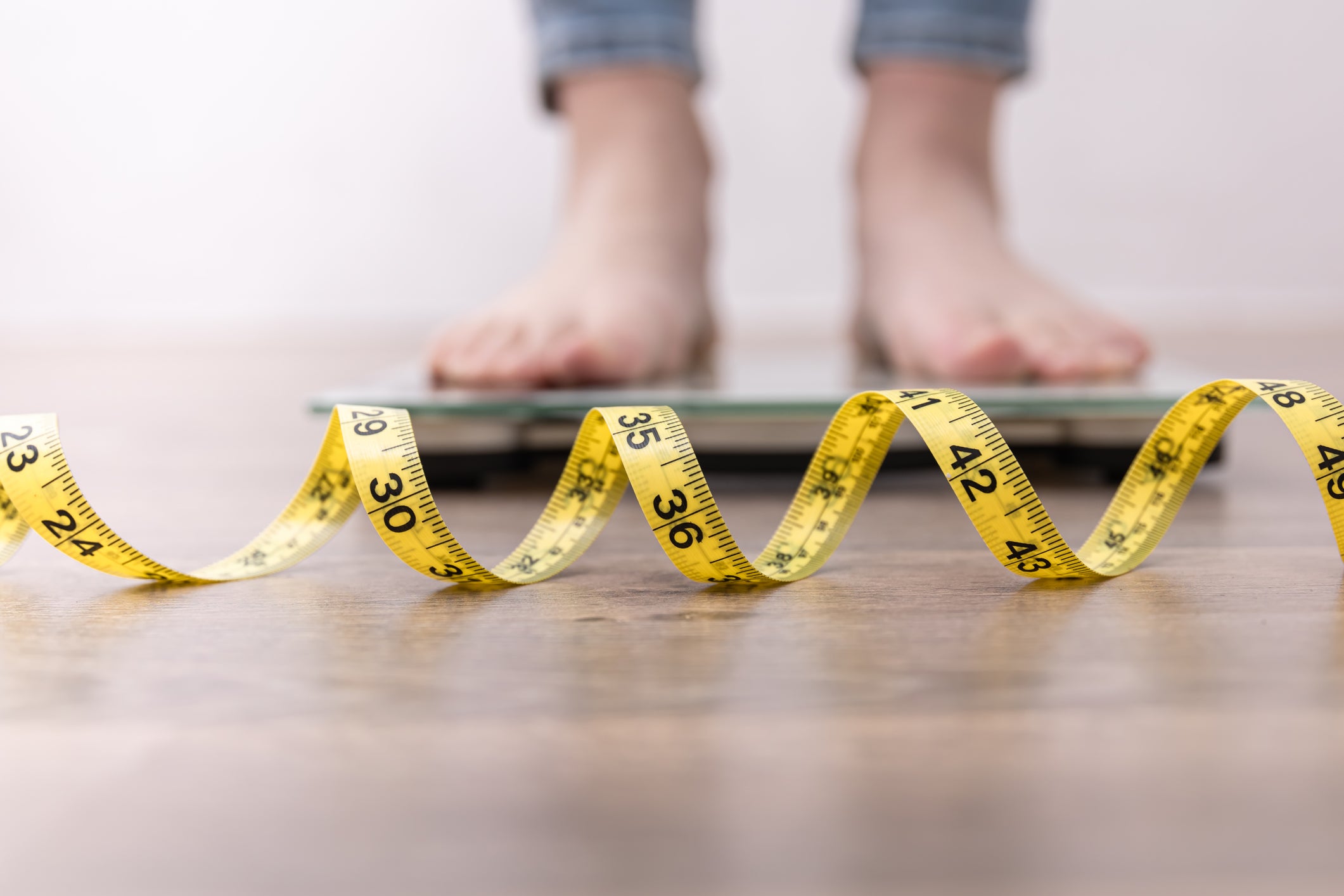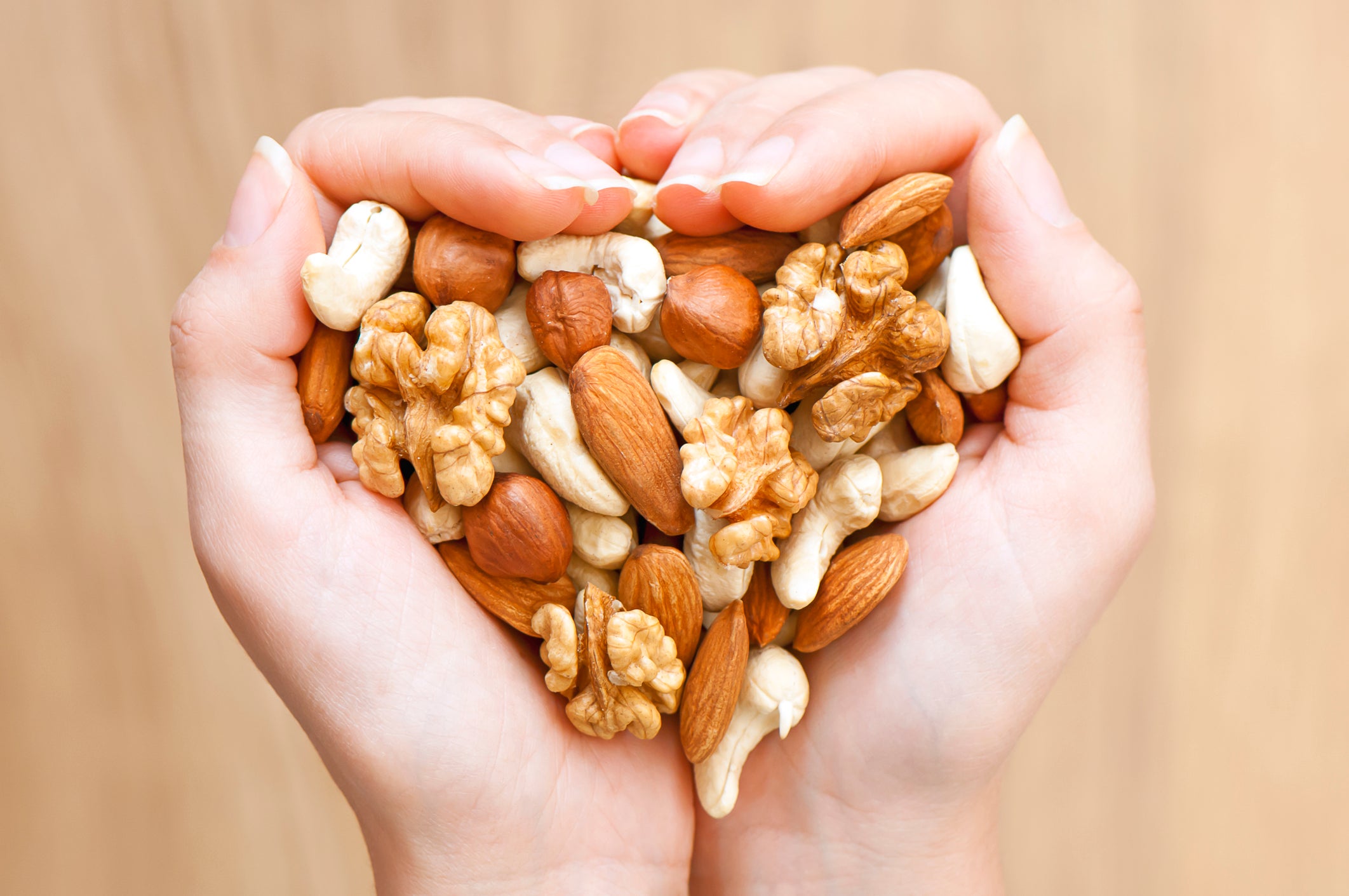Gut health reset: How belly fat is harming you and six eating changes that will reduce your waist size
As the new season kicks off, so do new fitness regimes – but research led by Professor Tim Spector shows that waist size is a better guide to your health than your BMI. He and a team of experts, has created a three-part ‘reduce your waist, improve your health’ plan to help you lose unhealthy belly fat

You’re probably aware that as Britons, we’re getting fatter. But did you know we’re also getting wider? That’s much more than a beach body problem. Growing evidence has confirmed the association between waist circumference and the risk of serious preventable conditions, such as heart disease, type 2 diabetes and stroke.
Official figures revealed that in the first half of 2023, there were an extra 28,000 deaths in the UK. The biggest rise in unexpected deaths was in adults aged 50-64, who have increasingly been dying prematurely from preventable problems such as heart disease, diabetes and high blood pressure.
But instead of BMI, health bosses are increasingly focusing on waist circumference as a measure of these health risks. In April 2022, the National Institute for Health and Care Excellence (NICE) recommended that people with a BMI of under 35 measure their waist-to-height ratio to work out whether they’re carrying enough weight around the middle to predispose them to a higher risk of metabolic diseases. It advised keeping your waist measurement to half your height or less.
According to 2019 figures from the NHS, 59 per cent of men and 69 per cent of women have a higher-than-desirable waist circumference. The figures, covering the period from 1993 to 2017, revealed that the average waist size of an adult English woman was 35.2 inches, up three whole inches from 32.2 inches 24 years earlier. Men had an average waist size of 38.5 inches, up 2.2 inches from 36.7 inches in 1993.
But just as a widening waistline can increase your risk, taking steps towards a healthy diet and lifestyle to reduce your waistline can reduce your health risk, too. New research from King’s College London has found that following a healthy diet and lifestyle for 18 weeks led to a healthier waist circumference, reduced blood pressure, improved blood fats, weight loss, and improved gut microbiome composition.

The research, published in November 2023 in the journal Proceedings, was the result of a randomised controlled trial called the Zoe Method study. It took 347 people and split them into two groups. Half of them followed American population-based guidelines for a balanced diet based on the US government’s Myplate scheme. The other half followed a personalised nutrition and lifestyle plan co-created by Tim Spector, professor of genetic epidemiology at King’s College London.
“The participants in our group saw improvements in their blood lipids, their blood glucose control and their gut microbiome. But the most significant change was the reduction of 3-6cm in their waist circumference,” says Dr Sarah Berry, associate professor in nutritional sciences at King’s College London, chief scientist at Zoe, and co-author of the study.
The programme measures people’s gut microbiome, blood lipids and blood sugars, then recommends a nutrition programme for them. The Independent has teamed up with Zoe’s scientific team to bring you some of the key nutrition and lifestyle changes that worked to reduce waist size for people in the study.
Why reducing your waist matters
Nutrition and health researchers have moved away from body mass index (BMI) as a predictor of health. “One of the issues with BMI is that it does not take into account the distribution of body fat,” says Prof Spector.
“Visceral fat [fat around the middle] and liver fat are associated with increased cardiometabolic risk factors, including insulin resistance, high blood pressure, and poor blood fat profiles. Waist circumference (or more specifically, waist-to-height ratio – see above) is a better indicator of body composition, and is an easy, low-cost measure that clinicians can use to assess cardiometabolic risk.
“If you have a higher waist circumference, reducing this can have a measurable impact on improving your risk of cardiovascular disease and type 2 diabetes,” Prof Spector continues. “It can improve insulin sensitivity and blood glucose control, lower blood pressure, and reduce elevated blood fat, which all contribute to metabolic health.”
But how does that work? “An elevated waist circumference is associated with a change in the kinds of hormones and proteins the fat cells produce,” Dr Berry explains. “An increase in these causes a reduction in insulin sensitivity, releases lots of pro-inflammatory chemicals, and directly impacts type 2 diabetes risk, blood pressure and cholesterol.”
Measure your waist – accurately
You could have a Dexa scan to get an accurate measurement of your visceral fat. But taking your own waist circumference is adequate, if you do it properly, says Dr Berry. Find the midpoint between the top of your hip bone and the bottom of your ribs, or just use your belly button as a guide. Be consistent and measure at the same place each time for an accurate comparison.
According to the British Heart Foundation, for men, a waist circumference below 94cm (37in) is “low risk”, 94–102cm (37-40in) is “high risk”, and more than 102cm (40in) is “very high”. For women, below 80cm (31.5in) is low risk, 80-88cm (31.5-34.6in) is high risk, and more than 88cm (34.6in) is very high.

Make six eating changes that will help reduce your waist size
Your waist size is also influenced by genetics and by hormones.
“We know for example that men and women have different waist circumferences until middle age, but after menopause, women’s waistlines can increase and catch up.” But certain small measures can make a difference, says Dr Berry. “Set yourself up to succeed, firstly by not being tough on yourself and accepting that a wider waist can also be a natural part of ageing. Then take a few simple measures – ask yourself what you can do that’s easy with the biggest impact. After a month of doing one or two new things, add more. Take it slow and don’t rush the weight loss.”
Cut back on ultra-processed foods (UPFs)
A growing body of health experts are sounding alarm bells about UPFs and their effects on health. They also affect waist size. “The proportion of people with a high waist circumference has been increasing over time, and ultra-processed foods (UPFs) are a major culprit,” says Prof Spector. “These contribute to overeating and weight gain, and there is a lack of government action in taking strong measures to reduce our consumption of UPFs.”
UPFs are processed foods typically made with five or more ingredients, including substances not commonly used in cooking, like colours, sweeteners, emulsifiers and preservatives. They’re ubiquitous and include soft drinks, crisps and packaged snacks, low-fat fruit yoghurts, processed meats and fats, most processed cereals, and ready meals. Several studies have associated UPF-high diets with weight gain and obesity, and a 2022 study found that they were also associated with increased waist circumference in adolescents.
“We eat UPFs 50 per cent more quickly because of their processing,” says Dr Berry. “When we have compared people eating a UPF-based diet with those on a minimally processed diet, those in the UPF group usually consume around 500 calories more.” Why? “Ultra-processed food tends to be digested higher up in the intestinal tract where you have less of your fullness receptors, so it gets through the intestinal tract really quickly. That means you’re having fewer hormone signals saying, ‘I’m full, slow down’, which take about 20 minutes to be released. So you eat more.”
You don’t have to roll your own oats to eat fewer UPFs. Some level of processing, like grain refinement for oats, rice, legumes and so on, is fine, as are freezing vegetables and other first-level processes used to make foods edible. Look at the label for the clues to harmful UPFs – if you see additives and ingredients you wouldn’t use in a regular kitchen, avoid it, whatever the front of the label claims (eg low-fat, gluten-free etc). If you’re unsure, check the grading of processed foods with the Nova food classification system developed by researchers at the University of Sao Paolo, Brazil.

Take (at least) 10-20 minutes to eat
Whatever food you choose, eating it slowly will have a positive effect on your waist size. “In our Predict study, we found that irrespective of what people ate, those who typically ate faster had higher visceral fat mass and waist circumference than the slow eaters,” says Dr Berry. She points to studies showing that if you simply reduce the speed at which you’re eating, then you could reduce your waist circumference.
There’s a time delay between food hitting your mouth and it reaching your lower gastrointestinal tract, where your fullness hormone receptors are. It takes 10-20 minutes for those to be stimulated, and for your hunger signals to be switched off.
“Put your knife and fork down between bites, take your time over meals and snacks, and try to avoid eating while you’re in front of a screen or a Zoom call – it’s proven to make you eat more,” advises Dr Berry. “Another tactic is to give yourself a smaller portion for dinner and take 20 minutes to eat it. If you’re still hungry, then have seconds, but you may not be if you eat it slowly and wait.”
Ignore calories
“We know that calorie counting does not achieve sustainable reduction in waist circumference,” says Dr Berry. “Cutting calories will cause a rapid reduction in waist circumference, but you won’t sustain it. The latest obesity research has confirmed that dieting by calories increases obesity. That’s because, after every sudden weight loss, you rebound and gain the weight again and then some, as the crash dieting reduces your metabolic rate and stimulates your hunger signals to eat more. The way to improve your waist circumference and your body composition is to eat for your best all-round health. Then weight loss is slower but more sustainable.”
Snack on almonds
Many people are eating healthy meals but undoing their benefits with unhealthy snacks like crisps and biscuits, other research from Prof Spector’s team has found. Decide what times you tend to crave on-the-go snacks and plan some healthier alternatives, like a handful of almonds. They’re satisfying and contain healthy fibre and fats.
Actually, despite being high-fat, almonds aren’t absorbed by the body in the same way as other high-fat foods, Dr Berry explains. “We know from the research I’ve done that if you eat almonds, about 30 per cent of the calories on average are excreted because of the almond’s food ‘matrix’ or structure, so they’re a great satisfying snack.”
Eat for 10 or 12 hours – then fast
“People that practise time-restricted eating (TRE), even if they’re not given any guidance on how to do it, inadvertently eat 2-300 calories less without calorie counting or consciously trying to eat less,” says Dr Berry.
Sometimes called intermittent fasting (IF), there are various models for TRE that range from fasting for 12 hours after dinner and eating for 12 hours the next day (12:12) to fasting for 16 hours and eating for eight (16:8) to fasting for 14 and eating for 10 (14:10).
New research, also from Zoe, presented last November at the European Nutrition Conference, has found that fasting for 14 hours after dinner and eating within a 10-hour window the next day could lead to better health and weight loss. That would mean that if you eat your first bite at 9am, you should have your last by 7pm. If you can’t do 14:10, a 12:12 ratio is also beneficial.
“In our Zoe ‘Big IF’ study on intermittent fasting, we took 140,000 citizen scientists in the UK and asked them all to try to eat within a 10-hour window, fasting for the other 14 hours,” says Prof Spector. “Those who were able to implement time-restricted eating overnight saw increased energy, improved mood, and weight loss as well as improved gut health.”

Avoid late-night eating
“Every cell in our body has its own body clock, and if we eat in sync with our body clock, we can improve our metabolic health and our body composition,” says Dr Berry. “Our research has shown that avoiding eating after 8pm can lead to improved metabolic health, regardless of what you’re eating.”
Dr Berry’s team found that more than 60 per cent of people in their population studies ate after 8pm, and they were found to have poorer metabolic health, higher insulin sensitivity, and higher visceral fat. Later eaters, also ironically, woke up hungrier than those who finished eating by 8pm.
“There’s research showing that if you were to have exactly the same meal in the morning or the afternoon, in the morning your fullness signals are more responsive than if you had exactly the same meal later in the day,” says Dr Berry. So as the day goes on, your body becomes less full from the same meal. “That’s one of the reasons why we say try and avoid late-night eating.
“The Zoe Predict research also found that having more carbohydrates in the morning makes you more insulin sensitive, so you have less of an increase in circulating blood glucose after eating, which is better for your health and waistline.”
So, try to avoid too many carbohydrates later in the day, and pump them into your breakfast and lunch. Try too, if you can, to stop eating by 8pm.
LOOK OUT FOR...
PART 2 Gut health reset why your gut microbome matters and easy ways to enhance it
PART 3 Exercise, sleep, lifestyle, stress, and, of course, the elephant in the room – alcohol – the Zoe team and trainer Matt Roberts will tell you everything you need to know.






Join our commenting forum
Join thought-provoking conversations, follow other Independent readers and see their replies
Comments